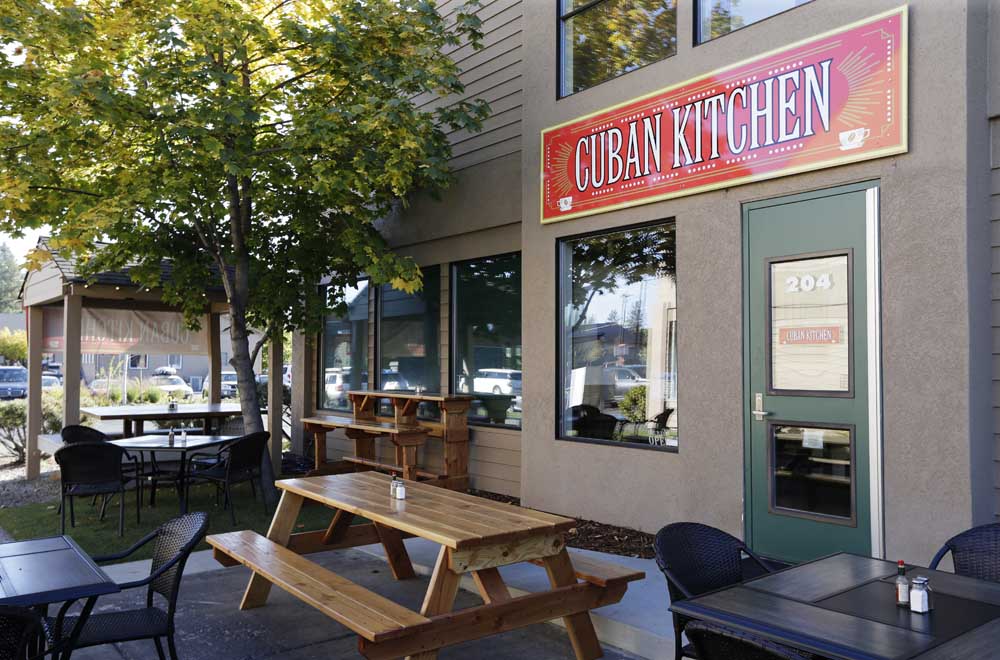Restaurant review: Cuban Kitchen
Published 12:00 am Thursday, October 4, 2018

- Cuban Kitchen (Bulletin photo)
Cuban is not a style of cuisine widely known in the Pacific Northwest. Sometimes described as traditional Caribbean cooking with Spanish and African influences, it has footholds in the United States in the Little Havana neighborhood of Miami and in suburban New York, where political exiles settled after fleeing their native island in the mid- to late-1950s.
These were the neighborhoods where Cristina and Chris Rojas were born and raised by their parents and grandparents, where they learned that hard work and positive attitudes can carry immigrant families to success. Chris became a stockbroker and financial adviser. Cristina earned an accounting degree from Florida International University. They became parents to four children, ages 8 to 16.
Trending
The Rojases were spoiled by great Cuban food, in their homes and in the restaurants along Calle Ocho, the festive main street of Little Havana. Cristina earned a reputation as a fine cook in her own right.
They share their heritage with diners at their Cuban Kitchen, a deceivingly small cafe that opened on Bend’s west side in early July.
The family relocated to Oregon after Chris visited an old friend in Bend in 2013. “I fell in love with the whole atmosphere,” he said. “So I did a lot of research. I discovered that Deschutes County is the fourth fastest-growing county in the nation and one of the top 10 places to raise a family. To me, it was a no-brainer.”
Two years later, they made the move. He is still in seventh heaven. “Bend is a small ‘big town’ that gives entrepreneurs like myself an opportunity to do something different, and to be successful,” he said.
Salsa and cigars
Cuban Kitchen occupies the former Juno Sushi premises in the mall on Century Drive. It’s a hidden location, but well-marked from the street. A remodel has given it a new order window (with an open kitchen view) and an extended outdoor seating area, some of it covered.
Trending
Cuban music plays in the background. Decor includes a Cuban flag, antique tourist posters and a century-old diagram of how to roll a cigar. Indeed, humidors of cigars stand on the counter — and Chris is hopeful that someday, perhaps after approval of the Cuban Kitchen’s liquor-license application, the restaurant will be able to serve mojitos with its cigars (outdoors, of course).
Cigar-factory workers in Ybor City (Tampa), Florida, popularized the sandwich once called the “mixto” at the end of the 19th century. Today, better known as the Cuban sandwich, it is made on a plancha, a press similar to a panini grill but without grooves.
The Cuban press ($10) is the most popular lunchtime meal at this cafe. I’ve had this sandwich in other restaurants around the country, but this may have been the best I’ve had anywhere — and that includes Miami.
A generous serving of marinated pulled pork, some of it in chunks, is coupled with sliced Serrano ham, Swiss cheese and finely chopped dill pickles between two slices of soft, French-style Cuban bread flown in from Little Havana. The bread is buttered, lightly spread with mustard and mayonnaise, and pressed to melt the cheese and render the crust just a little crisp.
Other sandwiches here include chicken, steak, pork and maduro (vegetarian plantain).
Gentle flavors
On two visits with my dining companion, I’ve been able to sample four entrees, ordered at the counter, delivered to the table.
Our favorite was the puerco asado, identified on the menu as “pulled pork” ($12). Marinated in island spices and juices, then slow cooked, the fatty but tender loin cuts were topped with grilled onions and generally served with traditional Moro rice, a blend of rice cooked together with black beans. (My companion asks for extra beans.)
The chicken fricassee ($13) was excellent. Tender chunks of poultry were sauteed in a tomato-based sauce with sliced onions and green peppers, pimento-stuffed green olives and raisins. My meal was served with white rice and maduros — small, sweet bananas also known as plantains.
Ropa vieja ($13) — “old clothes” — is considered one of Cuba’s national dishes. It was delicious. Shredded flank steak, marinated in garlic with a bay leaf, was stewed in a tomato sauce with bell pepper, onion and other vegetables. As with the other entrees, the plate was not overtly spicy, as I had anticipated, but was more a blend of herbs and citrus flavors.
The only entree that disappointed me was the palomilla steak ($13), topped with grilled onions. Thinly sliced, I found it dry and neither tender nor juicy, even with the addition of a vinegary mojo sauce. Yuca (cassava) fries were also substandard.
Overall, the cuisine was excellent, a superb addition to Bend’s burgeoning culinary catalog. “These are all family recipes,” Chris said. “This is the food we have been eating multiple times a week at home, for our entire lives.”
Chris said he wants to extend the menu with seafood dishes, including shrimp and paella, and rabo encendido, a fiery oxtail stew. And to finish, he’s already offering sweet Cuban-style espresso drinks, also known as cortaditos.
— John Gottberg Anderson can be reached at janderson@bendbulletin.com








